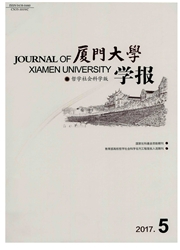

 中文摘要:
中文摘要:
正确认识我国绿色经济效率区域的差异,是合理平衡资源与环境发展关系,实现节能减排的重要前提条件。运用SBM/超效率SBM模型,通过对我国各省区绿色经济效率静态水平和动态变动进行测度,可以深入分析省区差异、收敛性以及影响因素。研究发现:全国绿色经济效率年均值为0.706,从整体上呈现先降后升的倒u型演化过程。虽然三大区域绿色经济效率水平东部最高,西部次之,中部最低,但省区间的差异性有所下降,绿色经济效率具有条件卢收敛性。研究期内效率水平改善的主要动力是技术进步,经济增长对绿色经济效率的影响逐渐减弱,1996—2010年全国范围内绿色经济效率和经济增长之间存在显著的倒u型关系。经济发展水平、FDI、结构因素、能源强度、城市化水平对绿色经济效率的影响,在不同时期具有不同程度的时空差异。
 英文摘要:
英文摘要:
To obtain a correct understanding of differences in green economic efficiency (GEE) in different regions of China is an important prerequisite for our capacity to strike a good balance between resources and environmental develop- ment and to materialize energy conservation and emission reduction. This study measures the stationary and dynamic levels of GEE in China's various provinces by SBM and super SBM and carries out an in-depth analysis of regional differences, convergence and influencing factors. The results show that the annual average of China's GEE is 0.706 and that its develop- ment follows an inverted U-shape on the whole. Although among the three traditional regions there is a progressive decrease in GEE, with the east being the highest, the west second highest and the middle the lowest, the GEE gaps between differ- ent provinces have been narrowed owing to its character of conditional 13 convergence. It is found that between 1996 and 2010 technological progress was the main driving force behind the improvement of GEE; that the effeet of economic growth on GEE gradually decreased; that across the country there existed a significant inverted U-shape relationship between GEE and economic growth; and that the influence of economic development, FDI, structural factor, energy intensity and level of urbanization on GEE varied according to different periods of time and regions.
 同期刊论文项目
同期刊论文项目
 同项目期刊论文
同项目期刊论文
 期刊信息
期刊信息
